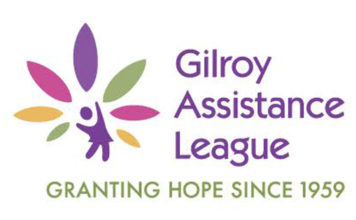
City Council overturned a controversial part of Gilroy’s sign ordinance Aug. 18 and decided that A-frame signs are permitted downtown. Though the required size of the A-frame signs has yet to be determined, they must be constructed of a wrought iron frame. Handheld signs, including those twirled by advertisers promoting new housing developments, are prohibited within city limits.
The original ordinance, which took effect May 7, also banned costumed character advertisers, flags and ballons, and limited the use of banners. News of the ordinance’s passage sparked concern across the business community and a group of locals formed a collective that urged the council to reconsider the legislation. Their appeal on June 9 was successful, and since then, the council and City staff members have been meeting individually with members of the collective—and other local organizations—as part of the ordinance’s review.
“I think the council is now going in the right direction,” said Mark Turner, CEO and director of the Gilroy Chamber of Commerce, of the council’s decision to allow A-frame signs. “What’s frustrating for business owners and certainly for the chamber is, to begin with, there was an ordinance in place and had it been enforced, we wouldn’t have had to go through all the things we’re going through as far as eliminating signage. It created a lot of upheaval and angst in the business community that wasn’t necessary.”
Franchise owners of Fiesta Auto Insurance in Gilroy, Barbara and John Rubio, jumpstarted the business community’s grassroots effort to overturn the ordinance and have been involved in ongoing discussions with City officials.
“It’s been exhausting, but it’s been well worth it,” Barbara said in the hallway outside of council chambers after the Aug. 18 meeting. “At first, it felt like the City and small businesses were not collaborating. I thought they were against us. But as we kept talking more and more, we realized they are listening to us and hearing our voice now. That’s a good thing.”
“This shows that the process does work and people being involved makes a difference,” Turner said. “The more people paying attention to the things the City Council is doing, the more people can be involved and work for positive change. This proves that involvement by the people does make a huge difference in getting some aspects of ordinances overturned and getting things moving in a more positive direction.”
Both the Rubios and Turner told the Dispatch they were frustrated that the City did not adequately enforce the sign ordinance prior to the outright ban on a variety of signage. And that lack of enforcement led to what may have been a minor problem into a festering eyesore that caught the attention of the council.
“The City never enforced it and things got crazy,” Barbara said. “Once we can get this going, I hope we can all get together and help clean up the community. We should call when we see a banner that’s torn or faded—even an A-frame that is ugly. We should go into that store and tell them. We need to start talking about it.”
According to the regulations, business owners may only keep up a banner for 10 days per month and the community will help monitor signage—-otherwise the City will jump in and start citing violators.
“It’s unenforceable,” Council Member Dion Bracco said, speaking to the limit on banner use. “I don’t care how long someone leaves a banner up as long as it looks good.”
Handheld signs are prohibited within city limits, and violators can face warnings and fines—up to $500 for repeat offenders.
“I feel very strongly that they’re a tremendous distraction in heavy traffic areas,” said Council Member Terri Aulman, advocating a ban on advertisers who wave and twirl signs on street corners.
Overall, enforcement of the ordinance will depend on complaints from members of the public, Community Development Director Kristi Abrams said. The Rubios said members of the business community are willing to self-police the ordinance.
“We’re not going to be able to hire people to keep enforcing it,” Mayor Don Gage said.














